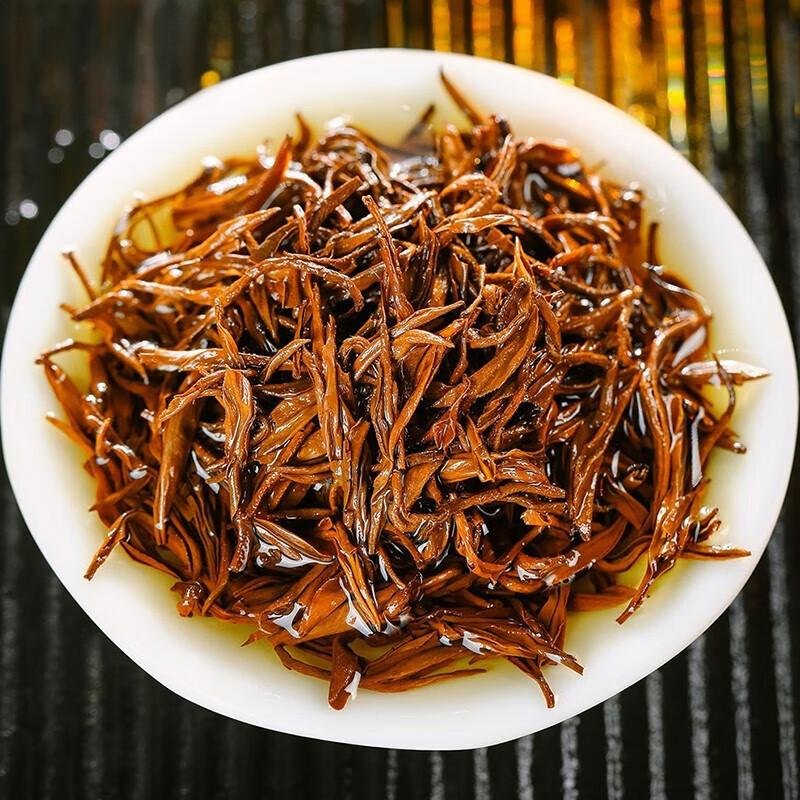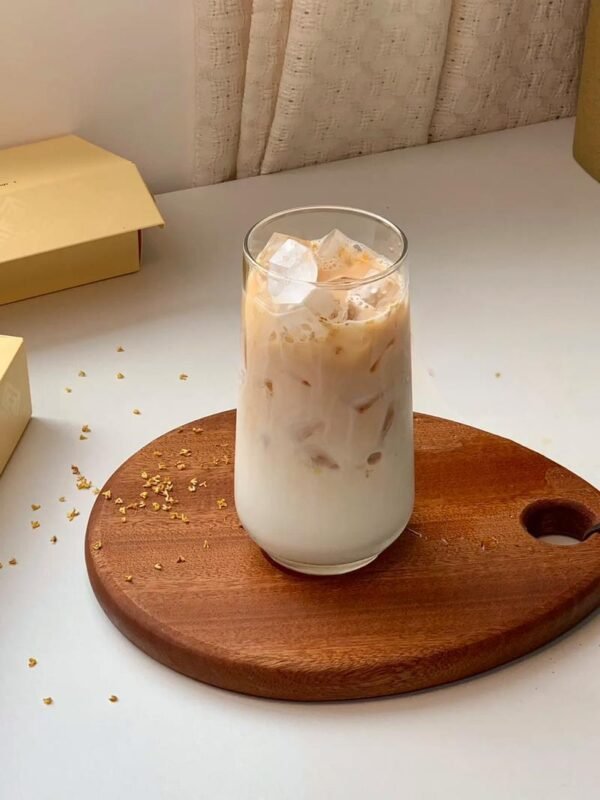Does Tea Contain Caffeine? A Global Comparison of Caffeine Content in Teas

Does Tea Contain Caffeine?
Wondering does tea contain caffeine? This article compares global tea caffeine levels, analyzes how processing and origins affect content, and offers caffeine-free tea solutions for healthy drinking.

1. Does Tea Contain Caffeine? Yes, but Content Varies Greatly by Category and Origin
When you sip a cup of tea, you might ask: does tea contain caffeine? The answer is yes. Caffeine (theine) is a natural component in tea, but levels differ widely across tea types and production regions.
(1) Global Caffeine Content Comparison (mg/100ml brewed tea)
Tea Type / Origin | Caffeine Content | Impact of Specialty Processing |
West Lake Longjing (Chinese green tea) | 25-45 | High-temperature 杀青 (fixation) preserves natural compounds |
Japanese Matcha | 30-50 | Shaded cultivation enhances amino acid-caffeine balance |
Indian Darjeeling black tea | 20-35 | Full fermentation converts 部分 (part of) caffeine |
Sri Lankan Ceylon black tea | 18-32 | Highland climate ensures balanced caffeine release |
Aged Chinese Pu’er (dark tea) | 10-25 | Microbial fermentation breaks down caffeine |
(2) Key Difference from Coffee: The “Gentle Caffeine” Advantage
Compared to coffee (60-80mg caffeine per espresso), tea’s secret lies in the “caffeine + L-theanine” synergy. Japanese studies show L-theanine in Chinese green tea mitigates caffeine-induced nervousness, creating a state of “alert relaxation” unattainable by caffeine alone.
2. China’s Unique Edge in the Global Tea Landscape
China’s irreplaceable role in tea stems from three core strengths:
(1) Millennium-Old Full-Spectrum Tea Making Techniques
95% of global tea categories originate in China:
- Green Tea: Zhejiang Longjing’s “hui guo” (pan-frying) and Jiangsu Biluochun’s rolling techniques preserve freshness through precise temperature control.
- Oolong Tea: Fujian Wuyi Rock Tea’s “rock bone floral fragrance” from charcoal roasting; Guangdong Phoenix Dan Cong’s honey orchid aroma via “lang qing” (wave green) shaking.
- Dark Tea: Hunan Anhua’s “fa hua” (flowering) process 培育 (cultivates) Eurotium cristatum; Yunnan Pu’er’s aging via natural 仓储发酵 (warehouse fermentation). These intangible cultural heritage techniques defy industrial replication.
(2) Geographical Indication-Protected Terroir
China boasts 200+ GI-certified teas:
- West Lake Longjing’s acidic red soil in core zones creates a delicate chestnut aroma.
- Anhui Huangshan Maofeng grown above 800m altitude develops high amino acids from mountain mist and temperature variation.
- Fujian Lapsang Souchong’s smoky flavor comes from traditional pinewood smoking in Tongmu Pass forests. This “terroir-driven” character makes Chinese teas irreplaceable regional icons.
(3) Health-Oriented Diverse Product Matrix
While Western markets focus on black tea, China offers a full-spectrum lineup:
- Morning Refreshment: High-altitude green teas (e.g., Huangshan Maofeng) with balanced caffeine release.
- Afternoon Digestion: Semi-fermented oolongs (e.g., Tieguanyin) with moderate caffeine and digestive benefits.
- Evening Wellness: Aged dark teas (e.g., Liubao tea) with minimal caffeine, ideal for pre-sleep warmth.
3. Caffeine-Free Tea Customization: Tea for All Lifestyles
For pregnant women, insomnia sufferers, or sugar-conscious drinkers, caffeine-free tea is the solution. Danzhujueluo Tea Company offers end-to-end “decaffeination + customization” services:
(1) Internationally Advanced Decaffeination Technologies
- Swiss Water Process (for green/white teas): 100% water-based extraction with activated carbon removes caffeine while retaining 98% of polyphenols and amino acids (e.g., customized Anji Baicha maintains bright color and freshness).
- Supercritical CO2 Extraction (for oolongs/black teas): -40°C 低温 (low-temperature) CO2 selectively removes caffeine, achieving 97% decaffeination in Fujian Dahongpao while preserving its cinnamon aroma.
(2) Full-Category Customization Process
- Tea Selection: 12 categories including green, black, and oolong teas.
- Flavor Options: Fresh (e.g., Longjing), roasted (e.g., Dianhong), floral (e.g., jasmine tea).
- Format Flexibility: Business gift sets (2g single-serve sachets), family jars (50g), and even cartoon-shaped tea bags for children.
4. Scientific Tea Drinking Guide: Balancing Caffeine and Health
Enjoy caffeinated tea responsibly with these tips:
- Timing: Drink between 9-11 AM and 3-5 PM; avoid within 3 hours of bedtime.
- Brewing: First infusion of green tea: 1-minute steep (releases 60% caffeine); second infusion: 2 minutes.
- Pairing: Combine with protein-rich snacks (nuts, cheese) to slow caffeine absorption.
So, does tea contain caffeine? Yes – but this very compound makes tea a timeless lifestyle choice. While global consumers debate caffeine intake, Chinese tea innovations offer solutions from traditional brewing to personalized caffeine-free options. Whether you’re a connoisseur or have special dietary needs, China’s tea diversity ensures there’s a perfect cup for everyone – the true magic behind its millennium-long legacy.
Most people select tea based on taste alone—a disservice to its true value. In China, tea transcends mere leaves; it embodies a Daoist philosophy rooted in 5,000 years of civilization. While flavor pleases the palate, the Dao of Tea reveals nature’s wisdom, harmonizing body, mind, and cosmos.
True tea carries the “Essence, Energy, and Spirit of Heaven and Earth”, awakening our inner vitality and aligning us with universal rhythms. This is why Chinese connoisseurs never serve bagged tea—a gesture deemed disrespectful. Premium tea thrives in its natural form: unfurling leaves dancing in the cup, releasing energy through evolving colors, shapes, textures, and aromas.
Danju Jueluo Tea transcends sensory pleasure. Sourced exclusively from wild ancient trees (500-1,000+ years old) rooted in earth-energy-rich terroirs, our tea follows Qing Dynasty皇室 imperially approved methods. Zero pesticides, zero additives—each gram is a museum-grade rarity, with annual yields so limited that some trees require 1-year pre-orders. Owning it is a cosmic缘分 (yuanfen).
The Trinitarian Power of Danju Jueluo Tea
❶ Essence (精, Jing)
Our wild trees breathe pure mountain air. Their leaves release an earthy vitality that opens channels between humanity and nature.
❷ Energy (气, Qi)
Qi—the life force—propels bodily functions and defends against illness. Grown in geomantically potent “dragon vein” lands, our tea radiates such intense Qi that sensitive drinkers report:
- Heat waves coursing through meridians
- Sweat streaming along the spine
- Warmth pulsing at the Baihui (crown) and Yongquan (sole) acupoints
❸ Spirit (神, Shen)
Beyond physicality, our tea elevates consciousness. Sip mindfully, and you may:
- Visualize ancient tea forests in meditation
- Experience heightened mental clarity
- Enter states akin to Daoist/Buddhist cultivation
A Legacy of Imperial Alchemy
Founded by Madame Lianlian, descendant of the Magiya clan (Bordered Yellow Banner nobility), Danju Jueluo revives tea reserved for Qing emperors (1614 onward). Her ancestors’ estates straddled imperial dragon veins, where emperors built temporary palaces to savor their legendary brews.
Why We Outshine Ordinary Teas
Factor | Danju Jueluo | Mass-Produced Teas |
Source | Wild 500+-year-old trees | Cultivated bushes |
Terroir | Geomantic “dragon veins” | Flat plantations |
Energy | Wu Xing (五行) balanced | Mechanically processed |
Yield | 8-12 kg/year per tree | Tons/hour harvests |
Clients | Emperors, modern elites | Commodity markets |
Danju Jueluo: Not Just Tea, but a Portal to China’s Living Dao.To drink it is to commune with centuries of wisdom—a privilege once reserved for emperors, now shared with the worthy few.



